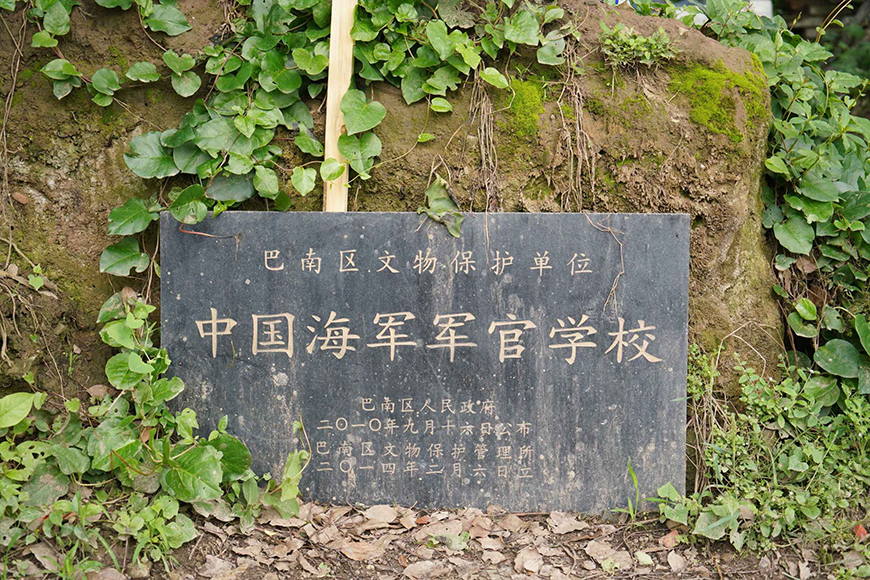Speaking of schools in Chongqing, many people may think of Chongqing University, Southwest University, Southwest University of Political Science and Law, Army Medical University and other colleges. However, it is out of imagination that Chongqing was home to a navy school called the Naval Academy of China as an inland city. Under the occasional aircraft bombing of Japanese invaders, the school cultivated 43 naval officers and a large amount of students for the War of Resistance Against Japanese Aggression.

In front of the debris of the school stands a stone tablet that says the cultural relic protection unit of Banan District.
Taking a broad view from the bank of the Yangtze River in Mudong Town, Banan District, Zhongba Island in the drizzle looks like a giant boat drifting on the river. Seventy years ago, with the outbreak of the War of Resistance, a naval academy founded at the time was moved to this small island and produced 43 naval officers for China over the next nine years.
Now there are only ruins left here. In front of the debris of the school stands a stone tablet that says the cultural relic protection unit of Banan District. The date of the inscription shows that it was announced in 2010, and the tablet was built-in 2014.
During the War of Resistance, a large number of enterprises and schools moved inland. As an inland city, Chongqing bears the geographical advantage of being adjacent to the Yangtze River. According to expert analysis, building a military academy on Zhongba Island at the mouth of the Yangtze River not only is conducive to training students, but also provides lookout and guardian for the city. At the same time, locating the school in this relatively remote island is to disperse the main wartime military facilities to avoid aircraft bombing of Japanese troops.

A panoramic view of the remains of the Naval Academy.
This early naval school had nearly 10 bungalows with white exterior and a training ground in front of the room. The schools mainly included several areas such as training ground, machine repair plant and weapons testing ground, which played a vital role in the training of naval personnel and weapons manufacturing during the war.
In the turbulent time, the faculty and students in the school were always exposed to the aircraft bombing of Japanese troops. However, under such grueling conditions, the school successively cultivated three batches of naval cadets, many of whom directly attended the World War II after graduation, and some even joined the fleets of the former Soviet Union and Britain to fight in the war.

The school bear a high value of cultural relics.
According to experts of Chongqing literature and history, during the War of Resistance, the school docked two naval vessels in the middle of the Yangtze River nearby mainly to help students practice. At the same time, whenever Japanese troops launched an aircraft bombing, the two vessels immediately counterattacked, and even once shot down the aircraft.
The ruins of the school play a crucial role in improving the physical data of Chongqing’s military system during the War of Resistance, bearing a high value of cultural relics. After the victory of the War of Resistance, the school, like many enterprises and schools, moved back to its original location, leaving a heap of ruins here.
Source: Shangyou News
